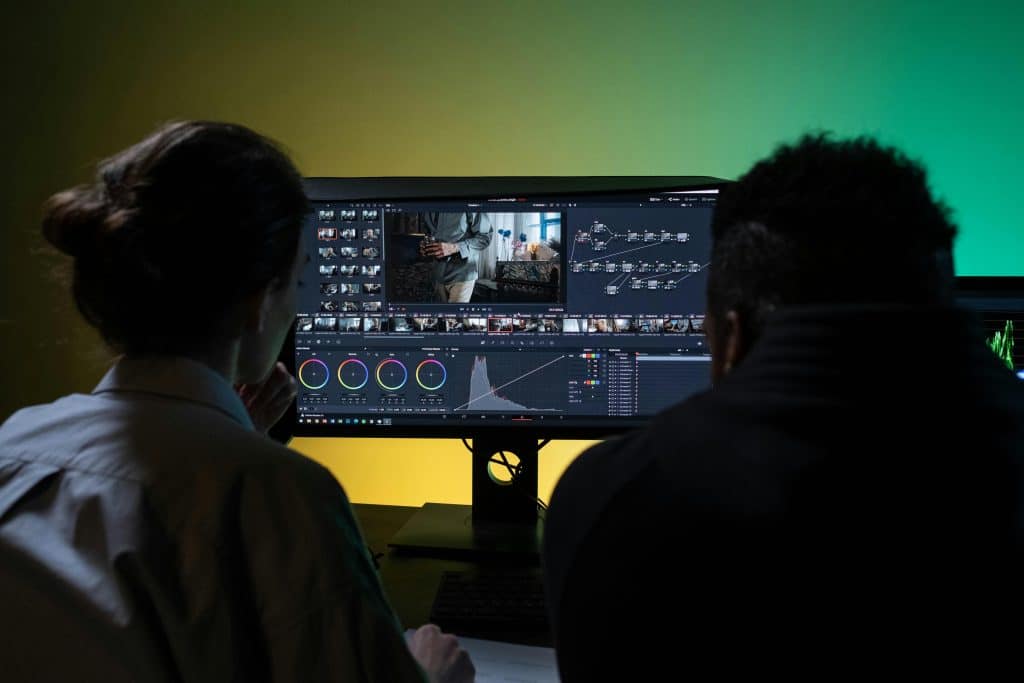Whether you’re planning a large-scale event, creating interactive art, or designing immersive experiences, the right software can make all the difference.
Finding the best projection mapping software is essential for turning creative visions into stunning visual displays. But with so many options available, how do you choose the one that fits your needs perfectly? Let’s explore the key factors to help you decide!
Why Projection Mapping Software Matters?
Projection mapping is a cutting-edge technology that transforms ordinary surfaces – like buildings, stages, or even small objects – into dynamic, interactive displays.
- By aligning visuals with physical structures, it creates immersive experiences for events, marketing campaigns, art installations, and more.
- Choosing the right software is crucial because it directly affects the quality and feasibility of your project.
The best projection mapping software not only provides the tools for precise alignment and creative effects but also streamlines your workflow. Whether you’re a beginner looking for simplicity or a professional seeking advanced features, the software you select will shape how effectively you can bring your vision to life.
4 Project Requirements You Must Understand Before Choosing Projection Mapping Software
Before selecting the best projection mapping software, it’s essential to thoroughly analyze your project’s unique needs. The type of event, the scale of the projection, and the complexity of the visuals all play a significant role in determining which software will be the best fit.
1. Event Type and Purpose
- Corporate Events: These often require polished, high-resolution visuals and seamless integration with other media. Software with real-time editing capabilities and precise alignment tools is essential for creating professional-grade projections that leave a lasting impression on audiences.
- Art Installations: For creative projects, flexibility and support for interactive features are key. Artists may require tools that allow for experimental mapping and easy adjustments to suit changing concepts.
- Live Performances: These demand software that can handle dynamic content changes and synchronize with lighting, music, or other elements of the show. Look for software with features like live preview and instant updates to manage these fast-paced environments effectively.
2. Scale and Complexity
For smaller projections, such as mapping onto products or interior surfaces, simpler software with essential features might be sufficient. This is often a more affordable and accessible choice for beginners or hobbyists.
Mapping onto buildings, landmarks, or expansive stages requires advanced tools. Software must support multiple projectors, blending, and warping capabilities to ensure accurate alignment and seamless visuals across complex surfaces.
3. 2D vs. 3D Mapping Capabilities
- 2D Projection Mapping:
This technique involves projecting images onto flat surfaces, such as walls or floors. It is ideal for simpler applications like indoor presentations, and many basic software tools can handle this effectively. If your project is straightforward, 2D mapping may suffice.
- 3D Projection Mapping:
For more ambitious projects that involve objects like sculptures, vehicles, or architectural details, 3D mapping is a necessity. This requires software capable of warping visuals to fit the depth, curves, and angles of the object being projected onto. Advanced features like depth calibration and geometry adjustment are critical for accurate 3D mapping.
4. Additional Considerations
- Audience Expectations: A large public event or performance may require high-end software to deliver a “wow” factor, while a smaller installation might prioritize ease of use over complexity.
- Budget: Balancing your project’s demands with your available budget will also help narrow down your software options. Free or affordable tools might work for simpler projects, but more robust software often comes with a higher cost.
Key Features to Look for in the Best Projection Mapping Software
Selecting the best projection mapping software requires understanding the key features that can make or break your project. Here’s what to prioritize when evaluating your options:
User-Friendly Interface
A user-friendly interface is essential, especially for beginners or those working under tight deadlines. Intuitive navigation, clear tool labels, and drag-and-drop functionality can significantly streamline the mapping process. Software with a steep learning curve can slow down your workflow, so ease of use is a critical consideration.
Example: Some software offers pre-built templates and guided tutorials, helping users get started quickly.
Advanced Editing Tools
Projection mapping often involves aligning visuals with irregular surfaces, which requires precise editing tools. The following features are non-negotiable:
- Geometry Correction: Allows you to align projections perfectly to curved, angled, or uneven surfaces.
- Masking: Helps control which parts of the projection are visible, enabling detailed designs or eliminating unnecessary visuals.
- Blending: Ensures seamless transitions between multiple projectors, creating a unified image across large surfaces.
These tools are indispensable for creating professional-grade projections that maintain accuracy and visual appeal.
Real-Time Playback and Control Features
Real-time playback capabilities are crucial for testing and fine-tuning your projections on the fly. This feature allows you to see how your visuals appear on the target surface without rendering delays. Additionally, live control features enable quick adjustments during events, such as:
- Content Resynchronization: For syncing visuals with music, lighting, or performances.
- On-the-Fly Edits: Making last-minute tweaks directly in the software.
These features are particularly valuable for live performances or complex installations where timing and precision are key.
By focusing on software with these essential features – an intuitive interface, advanced editing tools, and real-time playback – you can ensure your projection mapping project runs smoothly and achieves the desired impact. Investing in the right software not only enhances efficiency but also unlocks greater creative possibilities.
Conclusion: Bringing Your Vision to Life with the Right Projection Mapping Software
Selecting the best projection mapping software requires a thorough understanding of your project’s unique needs.
- By analyzing factors such as event type, scale, complexity, and required features, you can make an informed decision that enhances both the efficiency and impact of your project.
- Whether you’re creating a small-scale installation or a grand spectacle, choosing the right tools ensures that your vision becomes a stunning reality.
- Prioritize user-friendly interfaces, advanced editing capabilities, and real-time playback to streamline your workflow and deliver professional results.
Remember, the right software is an investment not only in technology but also in creativity and precision. By carefully evaluating your requirements and exploring your options, you can transform any surface into a captivating display that leaves a lasting impression.
What type of projection mapping project are you planning, and have you identified the specific features your software needs?







